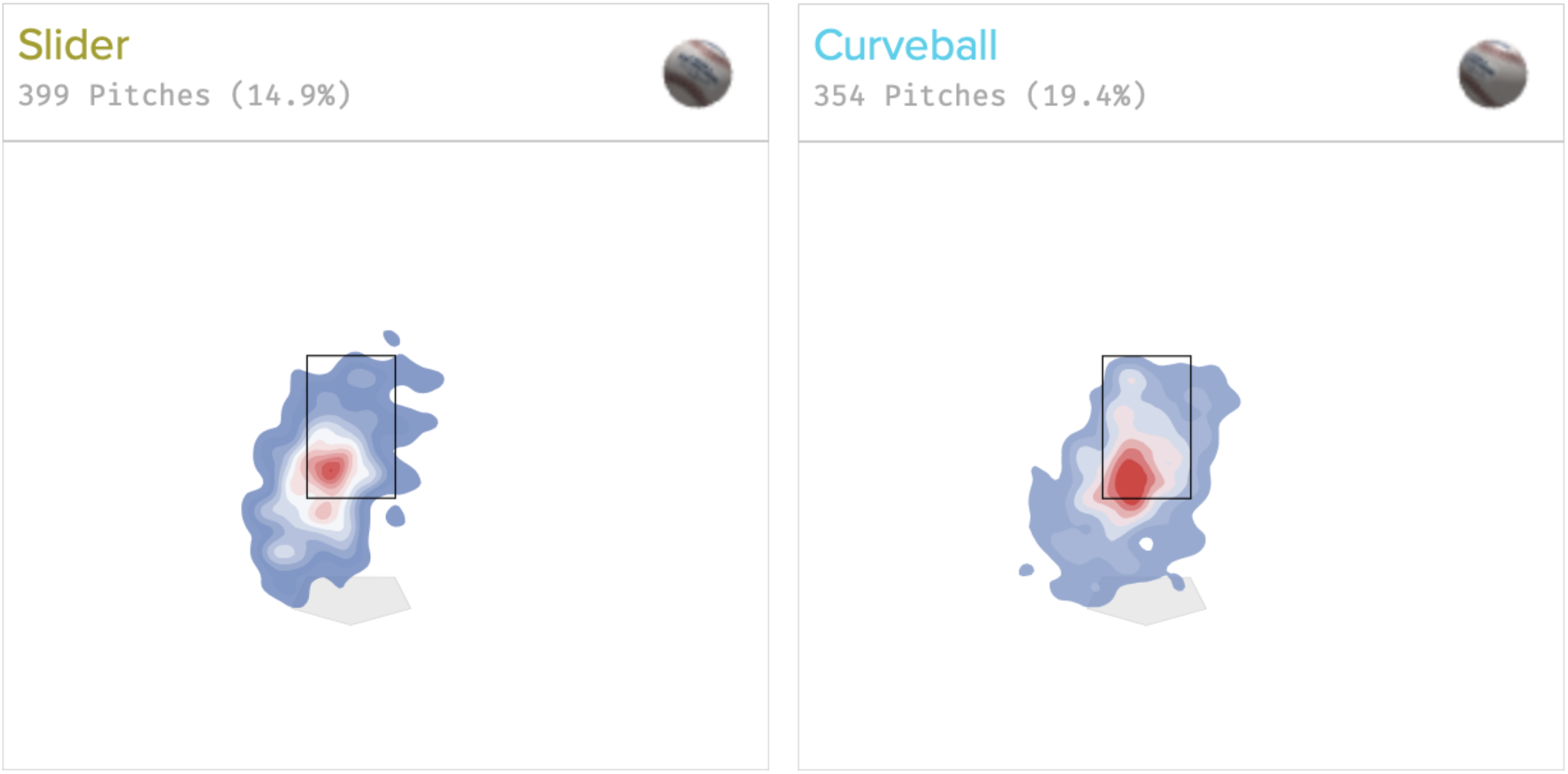Cole Irvin is having a pretty fantastic season. He was hit around a little bit in Houston during his last start, but you’d be hard-pressed to find a pitcher who hasn’t run into trouble facing the Astros at Minute Maid Park.
In 21 starts, he has tossed 129.1 innings with a 3.13 ERA. Only five pitchers in the American League have thrown more innings with a lower earned run average.
Now, to be fair, most anyone in the know will tell you that Irvin’s performance thus far is unsustainable. That’s probably true. The left-hander is not going to be one of the best pitchers in baseball going forward.
He is thriving with a lower-than-usual BABIP and a higher-than-usual left on-base percentage. He has been hit quite hard by opposing batters, and the Athletics have played tremendous defense behind him to turn those hard-hit balls into outs.
But even though he isn’t going to be a perennial All-Star (although on the Athletics, who knows), Irvin has still proven himself to be a solid big league pitcher this season. That’s an incredible achievement.
From a quick look at Irvin’s ERA estimators, you can see what kind of pitcher he can be going forward:
Irvin looks like a guy who can give his team five or six innings every start with an ERA in the mid-to-low fours. That’s a valuable player. It’s also a big improvement over his early-career numbers.
So what is Irvin doing differently this year? What’s the secret behind his breakout season? Let’s take a look.
Curvin’ Irvin
https://gfycat.com/elegantmisguidedislandcanary
Perhaps the biggest change Irvin made in 2022 is upping his curveball usage, and transforming his curveball from a major weakness into a usable tertiary pitch.
In 2021, Irvin’s curveball was one of the worst pitches in baseball. He used it just 3.3% of the time, and it still managed to rank as the second worst curveball in the entire sport (per Baseball Savant run value and RV/100). Opposing batters hit .440 against the pitch, and no qualified pitcher had a worse whiff rate on his curve than Irvin (5.1%).
This season, it’s been a very different story. In 2022, Irvin’s curveball ranks right around league average on Baseball Savant. That doesn’t sound too impressive on its own, but considering just how awful the pitch was in 2021, league average represents a huge advancement.
Opposing batters are hitting just .233 against Irvin’s curveball, and the pitch has a whiff rate of 25%. It has clearly become a weapon he feels confident deploying, and it has become a much more significant part of his arsenal.
Slide Over, Slider
The below tables show Irvin’s curveball and slider usage over the past two seasons. Every pitch-tracking source will categorize pitches differently, so all that’s really important to note is how Irvin is throwing his curveball much more often this year than last. He seems to be using it in favor of his slider, which was his primary breaking pitch early in his career.
As further evidence that Irvin is replacing his slider with a curveball this season, you can take a look at his slider location in 2021 and his curveball location in 2022. He is throwing the curve exactly where he used to throw the slider – and it’s working for him.

Cole Irvin’s slider in 2021 and his curveball in 2022. Per Baseball Savant.
Interestingly, though, it is not as if Irvin’s slider needed to be replaced. Looking at the numbers, he is getting very similar value from his curveball this year as he did from his slider last year.
So why is Irvin favoring his curve over his slider? Perhaps the answer lies beyond the breaking balls themselves.
Faster By Comparison
In July, Irvin spoke about using more curveballs than usual in a start against the Astros. He mentioned he liked throwing the pitch because his curve makes his fastballs “look a little harder.”
Interestingly enough, Irvin has had more success with both of his fastballs this year than in 2021. His four-seamer has nearly tripled in run value, and his sinker has gone from a mediocre offering to another above-average pitch.
The four-seamer in particular has really improved. Opposing batters are hitting just .177 against it with a .245 wOBA. The four-seam fastball has turned into a respectable putaway pitch for Irvin, something the left-hander lacked last season.
It is hard to say how much of that can be credited to Irvin’s increased curveball usage, but the curve is certainly playing a role. Surely it must be easier to catch hitters off-guard with a 91 MPH fastball if your primary breaking pitch is a 77 MPH curveball and not an 83 MPH slider.
Thus, Irvin’s revamped curveball is helping him out in more ways than one. It has transformed from a liability into a usable breaking pitch, and it is helping him trick hitters with his middling fastball. Thanks to the curve, Irvin has taken a real step forward in 2022 and proven himself to be a reliable back-end starter.
And who knows, if Irvin keeps tinkering with the curveball, maybe it could someday become a genuine plus pitch. It’s much easier said than done, but it’s certainly not out of the question.
Feature image by Michael Packard (@CollectingPack on Twitter) / Photography by Leslie Plaza Johnson / Icon Sportswire

